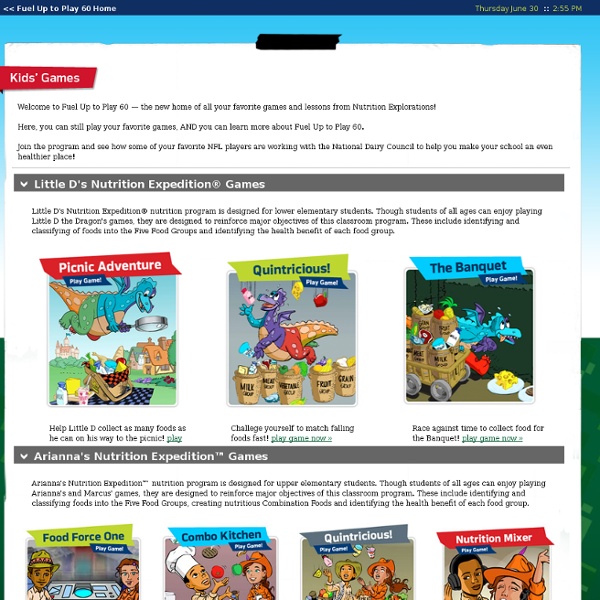Kids' Games from Nutrition Explorations

Related:
Related:



